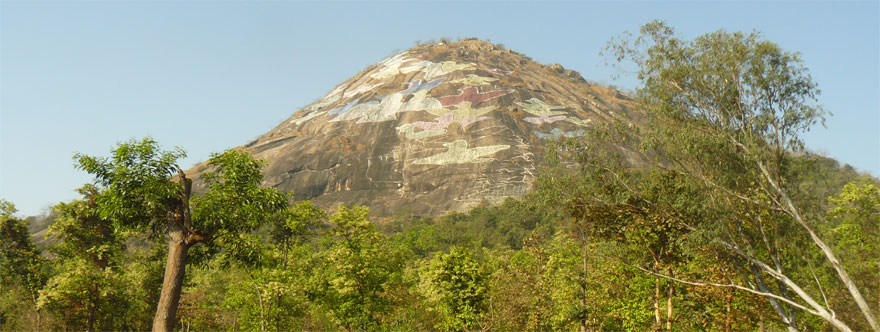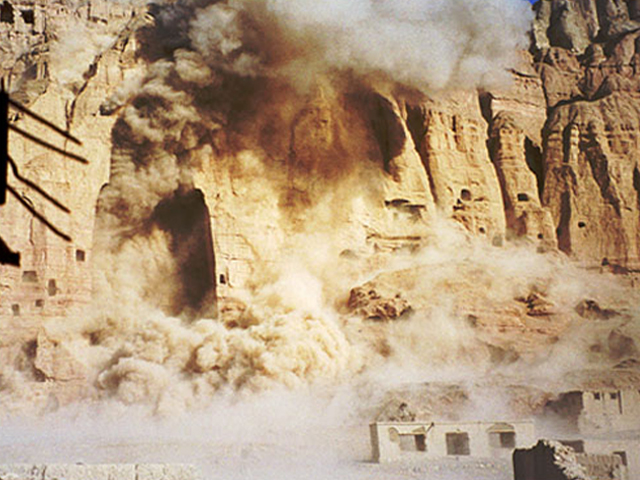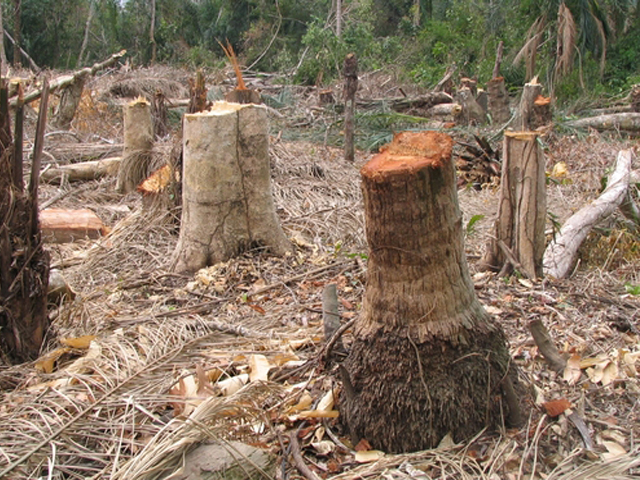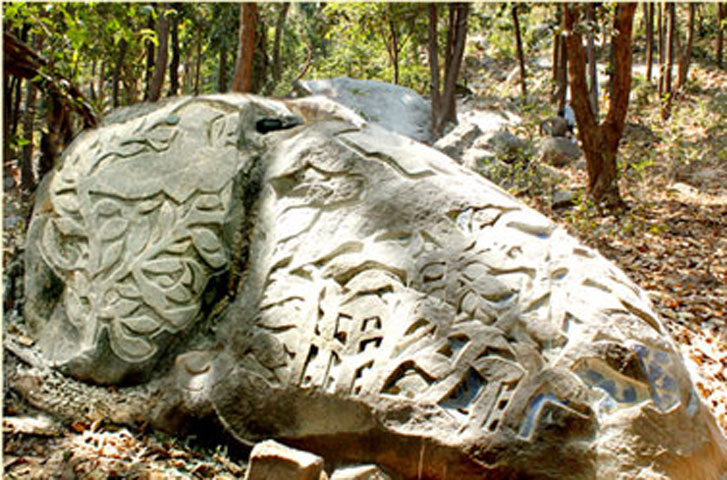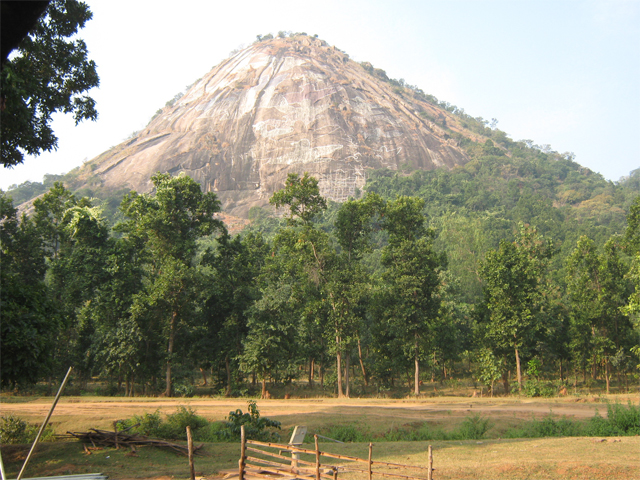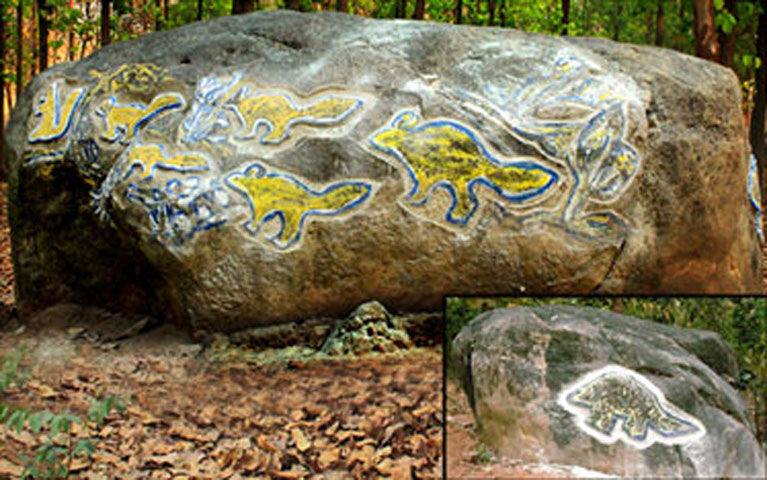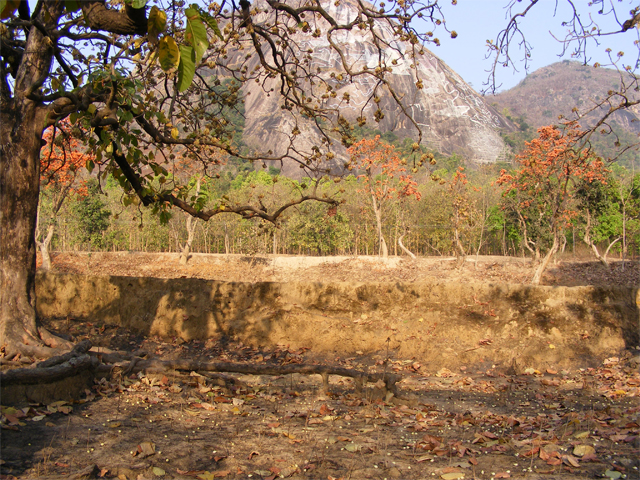The Pakhipahar project aims at the revival and rejuvenation of the tradition of our long-lost practice of in situ monumental rock carving. Considering the history of such examples at Ajanta, Ellora, Mahabalipuram, Elephanta Caves,
Unocoti, Mount Rushmore, Crazy Horse and Bamiyan the Foundation is careful to ensure preservation and conservation of both the environment and the carving for posterity.
The Chhotanagpur region is influenced by summer monsoons that cause major seasonal
changes in vegetation and habitat. Extensive hunting by the British and Indian rajas, large-
scale clearing of forests for agriculture, poaching, pesticides and the ever-increasing
population have had disastrous effects all over India and Purulia is no exception. Around
10% of the country still has forest cover, and only 4% is protected within national parks
and reserves. India is a land of varied flora, fauna and biodiversity, but in the last few
decades the extinction rate of flora and fauna has gone up heavily. Conservation of our
biological diversity is of paramount importance now. Only this can lead to conservation of
ecological diversity too. This outcome can preserve the continuity of our food chains. The
genetic diversity of plants and animals ensures sustainable utilisation of life support systems
on earth. Biological diversity provides immediate benefits to the society such as recreation
and tourism. Moreover, its serves as an insurance policy for the future.
The life of flora and fauna are intricately linked. For every plant species that goes extinct,
up to 30 other species of plants, insects and other animals may follow suit, sooner or later.
Plants provide the food and habitat for wildlife, from birds and butterflies to antelope and
field mice. The conservation of wildlife in India is often threatened because of many
reasons, lopsided and incorrect planning and poverty being some of them. Though India is
blessed with a wide variety of ecosystems, the threats posed to them are also many.
The Chhotanagpur range of hills surrounding the site of the Pakhipahar has borne the
brunt of irresponsible chipping of the rocks for different purposes, mostly for earning
moeny. The Foundation is committed to the preservation of rock bodies through their
secondary project of carving the scattered boulders and small rocks around Pakhipahar
project site to create replicas of local fauna that are on the verge of extinction or are already
extinct. The organization has made it a point to beautify the entire locale, so that the tribals
as well as the tourists to the site are sensitized to the need for aesthetic aspects of the
landscape. For this purpose several programmes are undertaken, including conservation of
old trees, planting of new ones, and landscaping.
